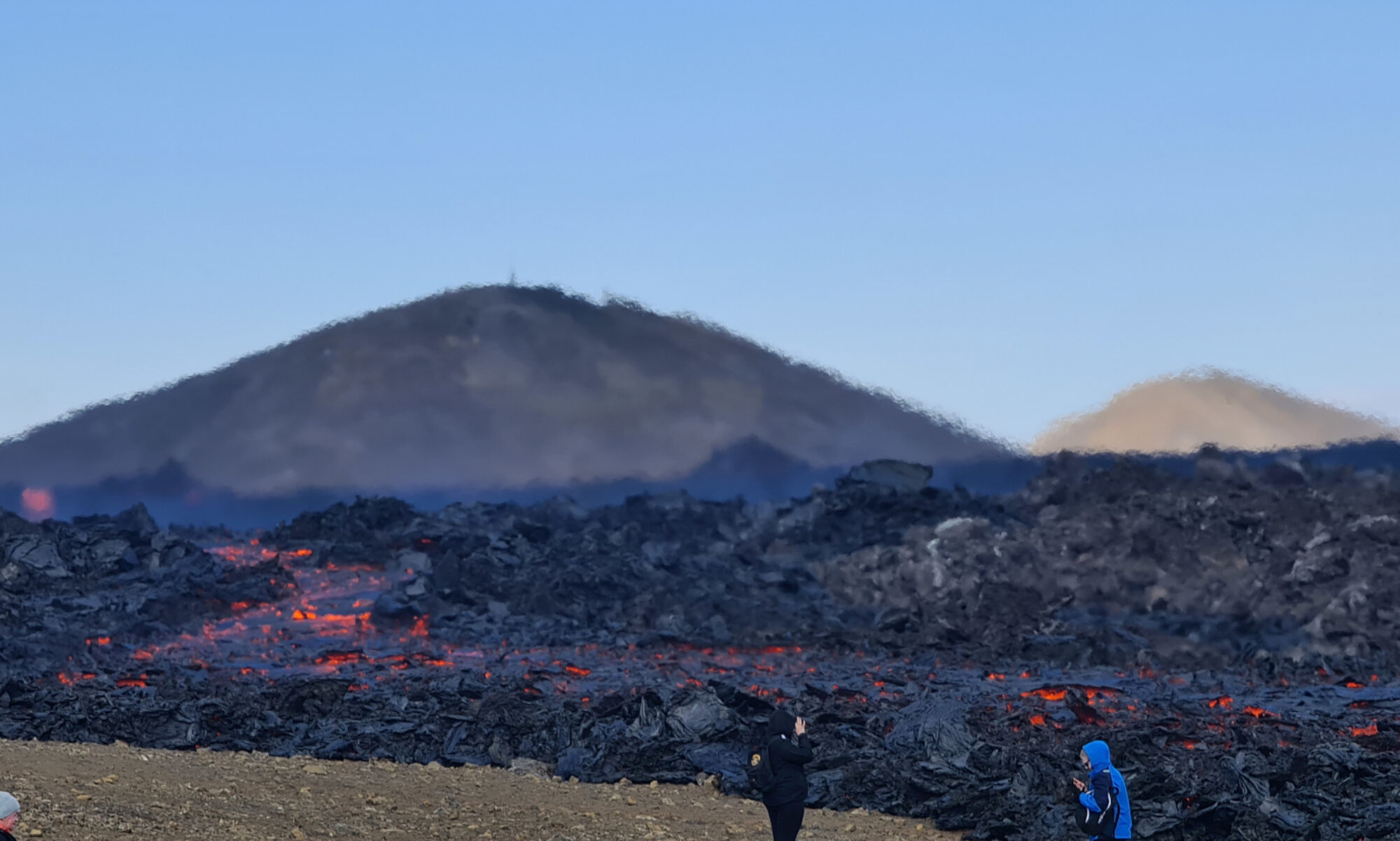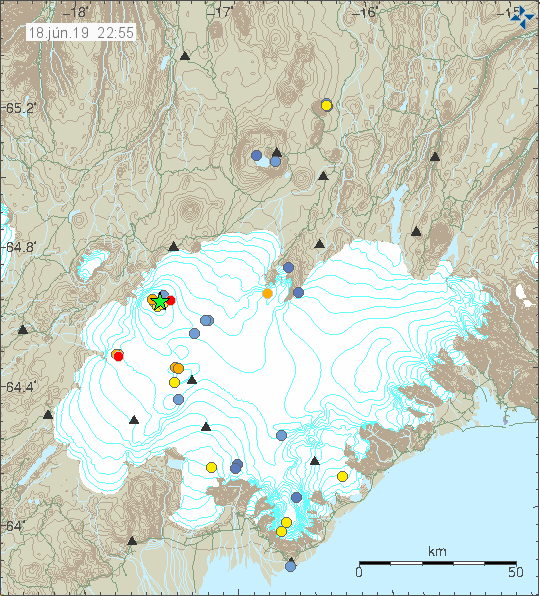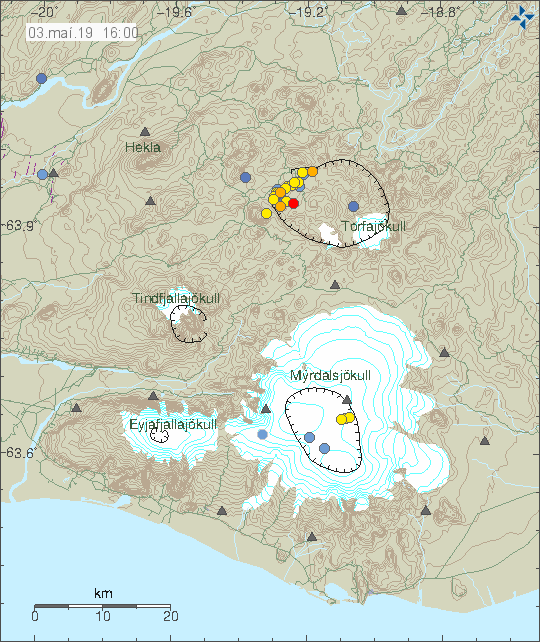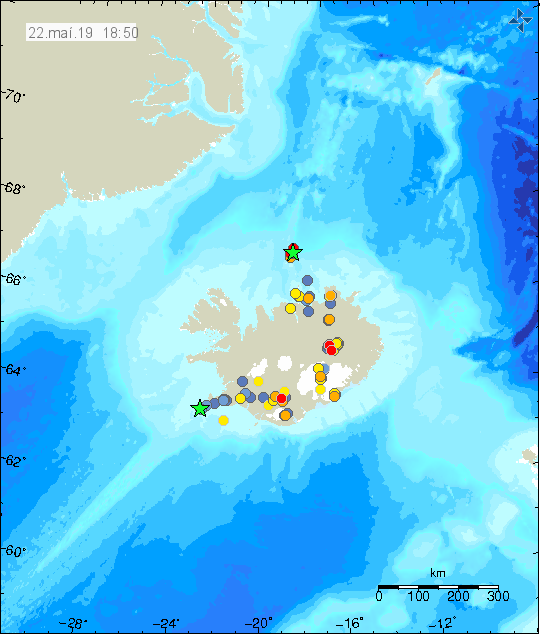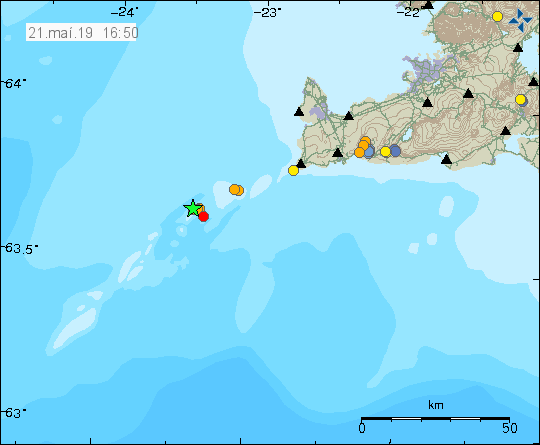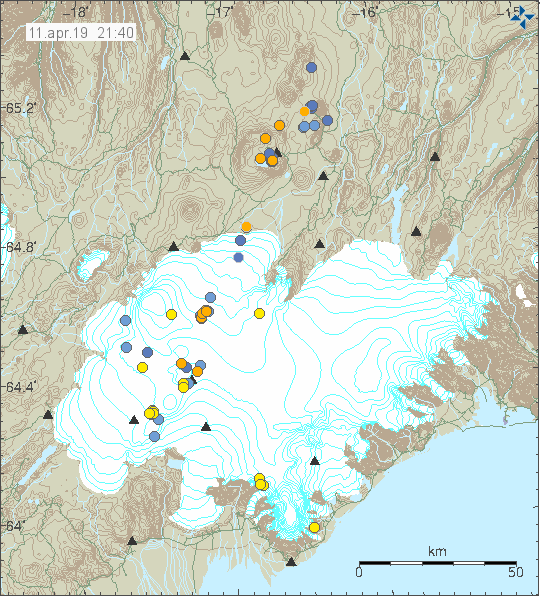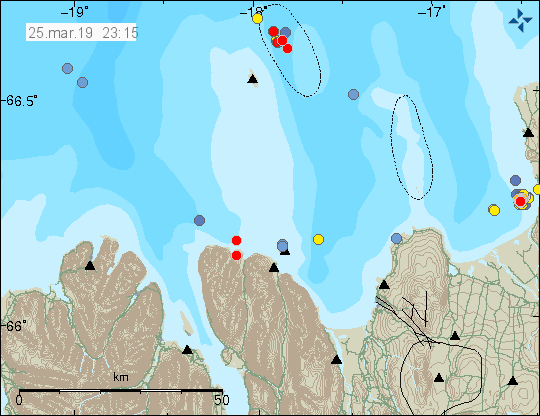Yesterday (19-June-2019) an earthquake swarm took place south-east of Bárðarbunga volcano. This area of Bárðarbunga volcano has been active since end of the eruption in February 2015 and possibly earlier than that. Last eruption in this area took place in with a start in February 1726 (+- 30 days) and ended in May 1726 (+- 30 days). More eruptions might have taken place at this location without being known or detected by people in the past.
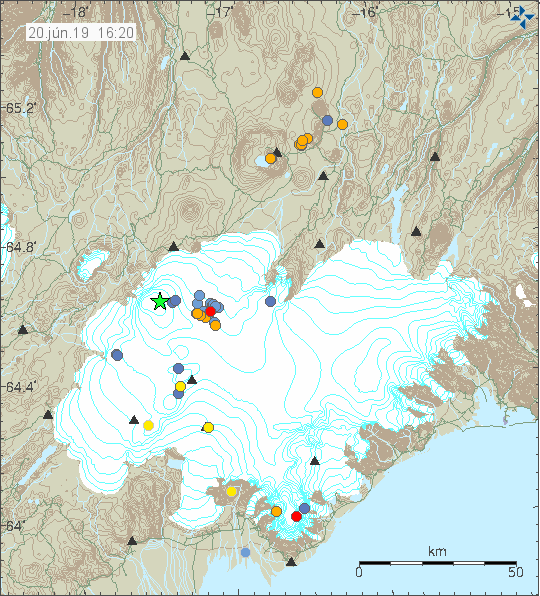
The earthquake swarm south-east of Bárðarbunga volcano. Copyright of this image belongs to Icelandic Met Office.
The depth of this earthquake swarm is considerable. Deepest earthquake recorded had a depth of 30,4 km and it is a possible that might be an error or poor location, other earthquakes recorded had a shallower depth. The crust in this location is up to 45 km thick according to measurements. It is not possible to know if this earthquake activity is going to result in a eruption. If an eruption happens it might happen without any warning and not of lot of earthquake activity before it happens.
Donations
Please remember to support my work with donations. If you donate with a bank (SEPA/SWIFT) please update your information since I have moved everything to my Danish bank again (information here). Thanks for the support. 🙂
